Our road to Mandalay from Bagan was in a taxi and took four hours, rather than twelve hours it would have taken on “the road to Mandalay” made famous in Kipling’s poem, which was actually referring to the Ayeyarwady (Irrawaddy) River. The centre of Myanmar through which we travelled is flat and agricultural, broken up only by tributaries flowing into the main river. As with any road trip in Myanmar though the “entertainment” is constant as drivers deal with the government’s decision from 1970 to drive on the right…while all cars have remained right hand drive!. Lewis Hamilton would be in awe of the overtaking skills this oddity demands.
Mandalay is a grid based city directly on the banks of the Ayeyarwady. It’s the second city of Myanmar and the cultural capital. Only founded in 1857 it’s a much younger location than the ancient area of Bagan that we just visited, although it can boast four previous royal capitals within a short distance of each other, so there’s plenty of things to see and do.
In the centre of Mandalay there is an enormous Royal Palace compound, bounded by 30ft high walls stretching 10km in a square, with a 60m moat around that. It would have been the main attraction in these parts but for the fact this was military headquarters for the occupying Japanese forces in World War II and everything inside the palace walls was eventually levelled by Allied bombing. Fortunately the focus of bombing inside the palace walls means that some marvellous sites outside the palace survived the ravages of war.
Shwenandaw Kyaung is an ornately carved teak building originally used as a residence for one of the kings and later converted to a monastery.
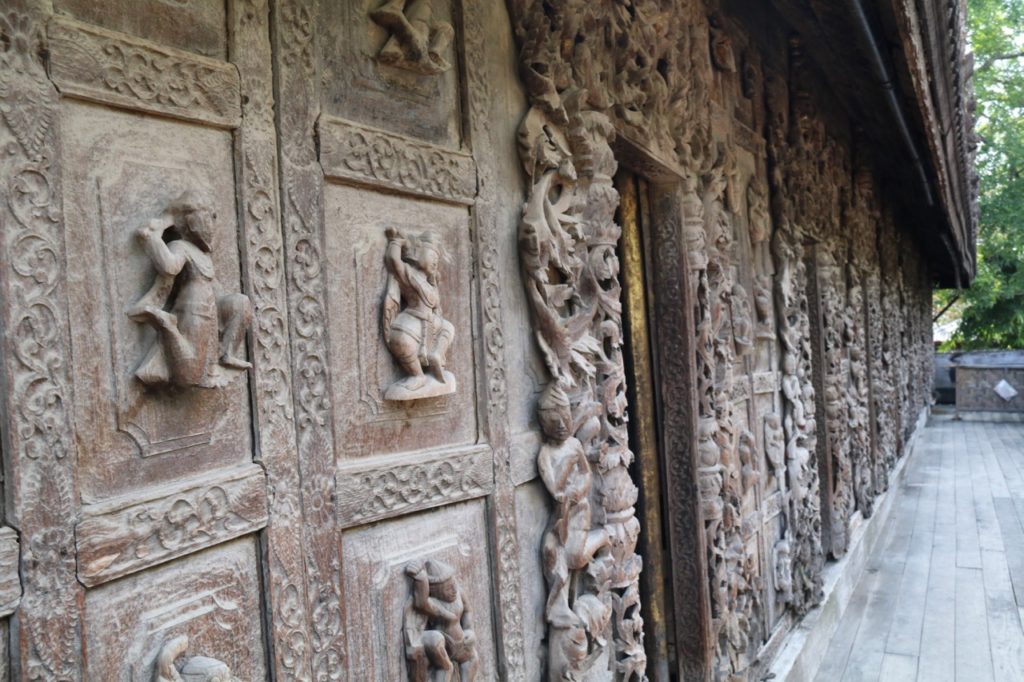
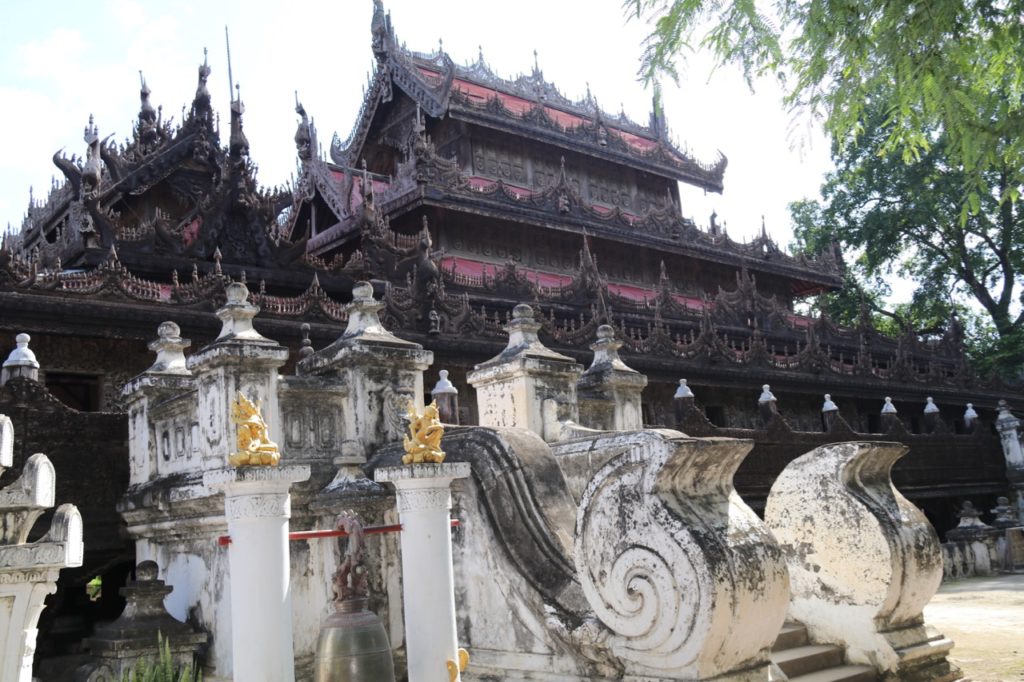
Kuthodaw Pagoda is home to 729 engraved marble slabs, and collectively they relay the entire fifteen books of the Tripitaka (a sort of Buddhist bible). Each marble slab is housed in its own stupa, so the site is huge and has attracted the label of being “the worlds biggest book”.
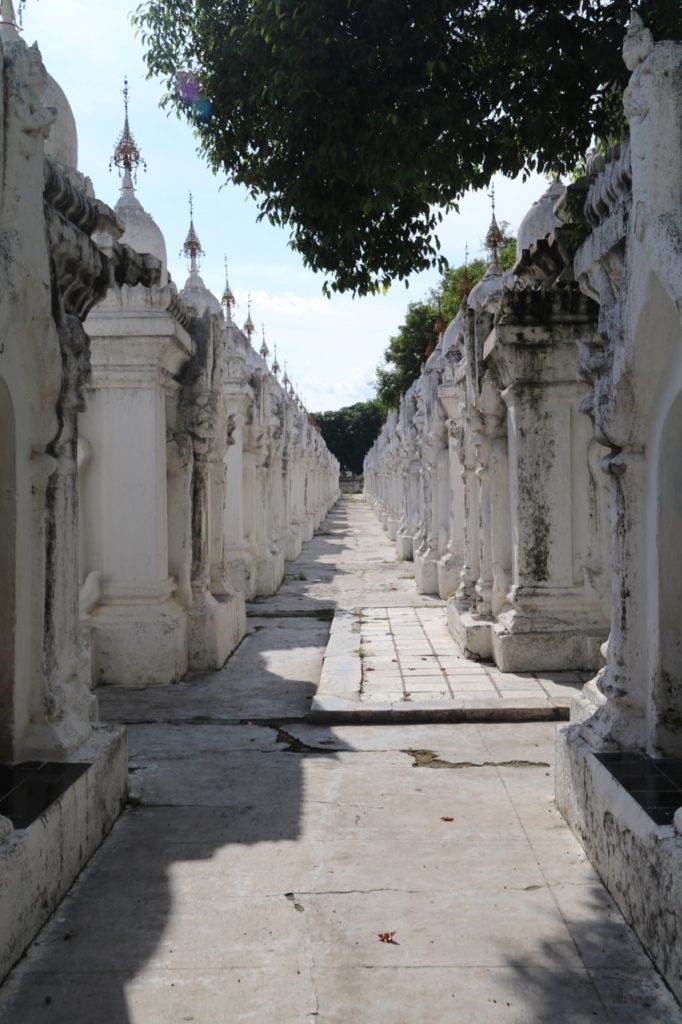
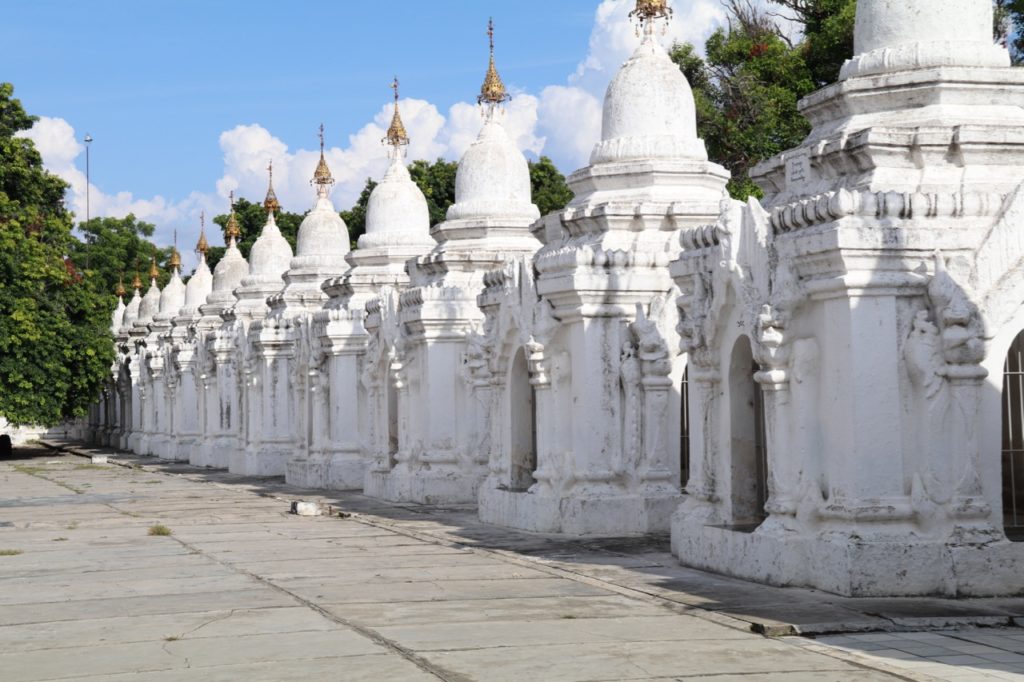
Mandalay Hill is just north of the city and affords fantastic views in all directions…enjoyed when you have conquered 800 steps to the summit. We walked up to watch the sunset and also enjoyed some conversations with novice monks who go there to practice english.
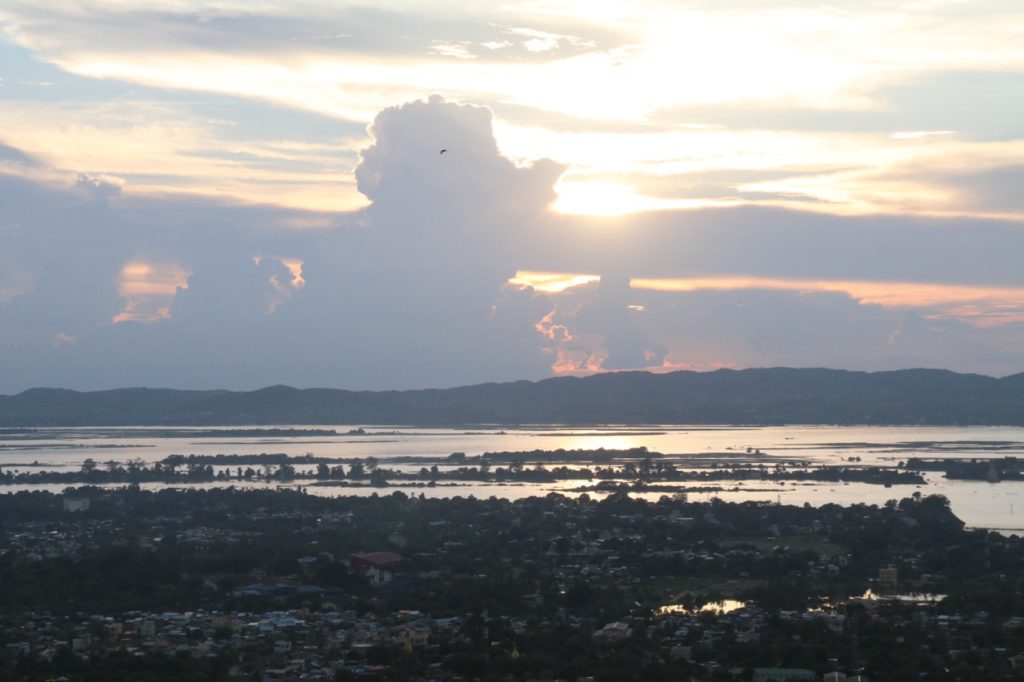
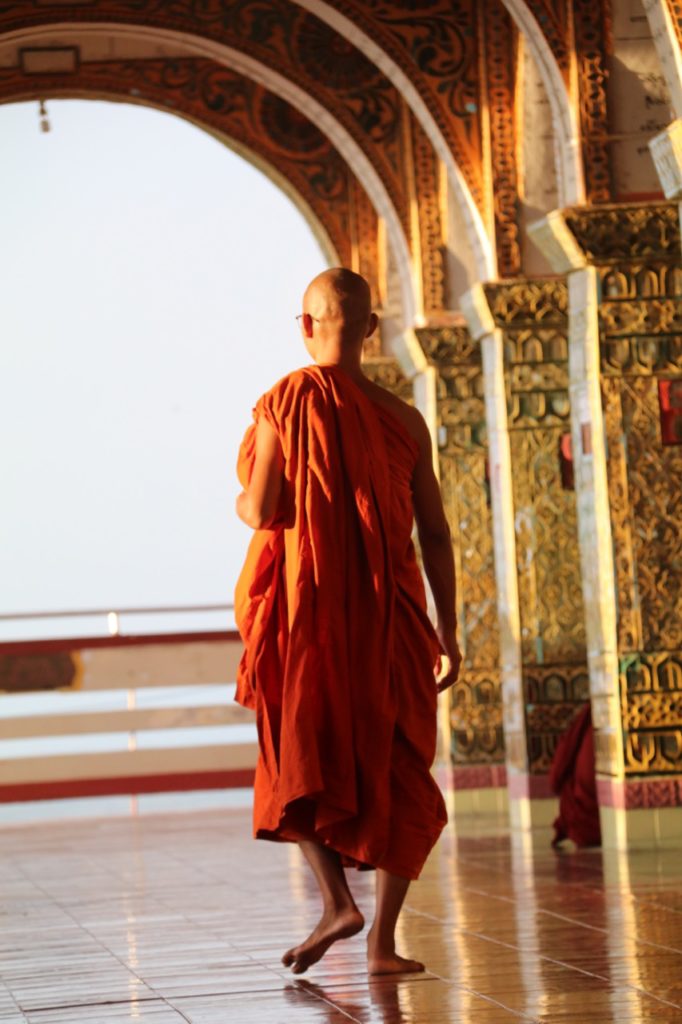
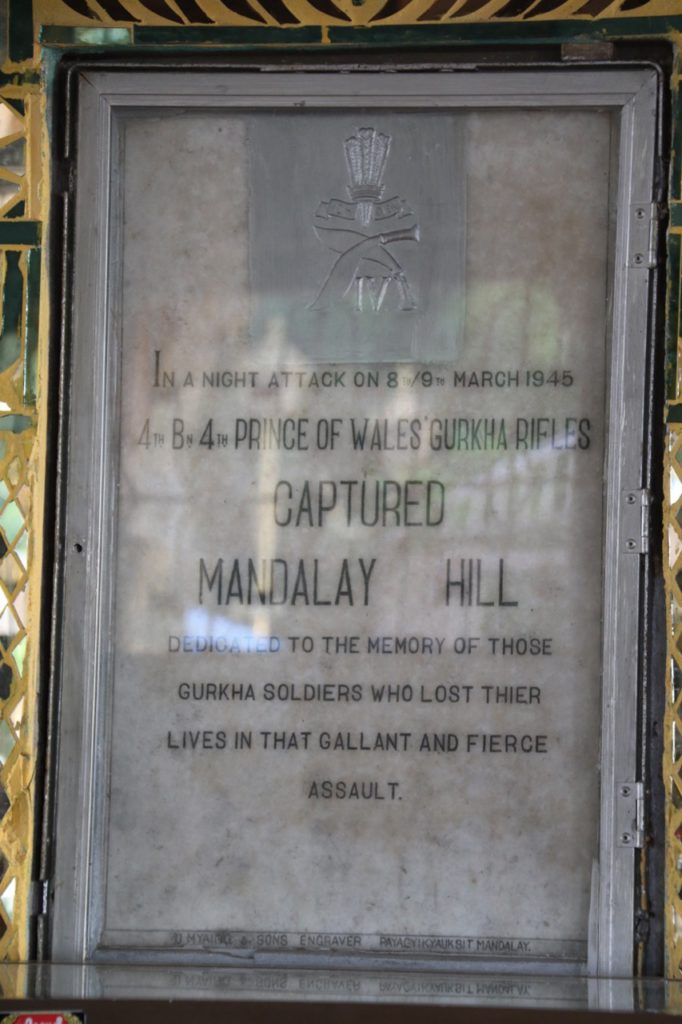
Mingun and The Mighty Ayeyarwady
Across the river from Mandalay is Mingun, which would have been home to the worlds biggest Pagoda, had it ever been finished. The enormous base built over 29 years from 1790 gives an indication of just how big the finished article would have been, but it’s fame now is probably only as the worlds largest pile of bricks. The severe structural damage caused by multiple earthquakes make it dangerous to climb…and as you can see it’s also a bit dangerous getting any closer to take photos! In the absence of the world’s biggest pagoda we contented ourselves by visiting the world’s biggest hanging bell, weighing 55,555 viss (apparently thats how you weigh bells, it’s the equivalent of 90 tons).
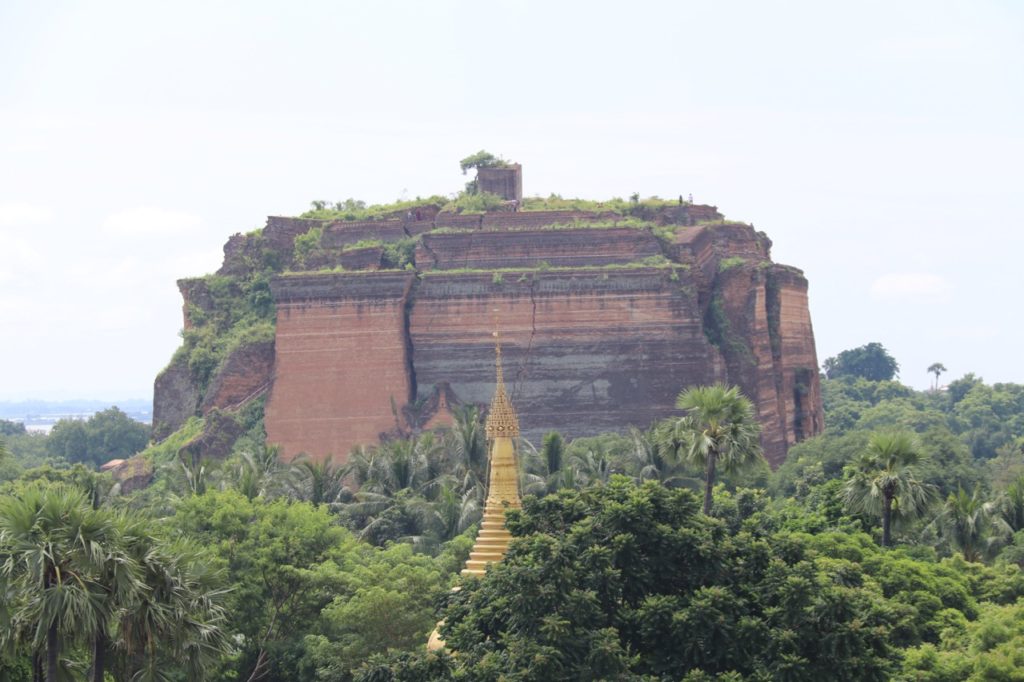
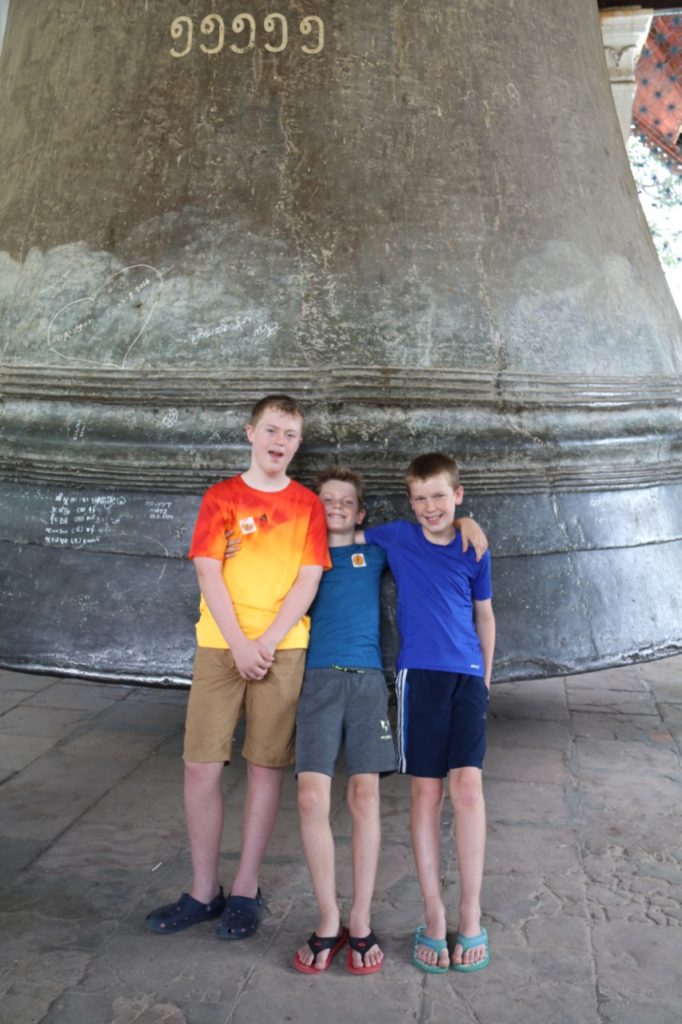
We travelled over to Mingun and then onward to Sagaing by traditional working river boat. It’s a really memorable highlight to have lounged on the top deck under a net awning and gently made our way along this impressive waterway. It’s one of the great rivers of the world and we were fortunate to see it in high water season, so it stretches over a mile wide and 30 metres deep. As the main artery of Myanmar it is navigable for 1600km from the sea, which is the primary reason colonial explorers from France, Britain and Portugal took a fancy to the country. It still provides transport for huge quantities of teak, irrigates the agricultural land throughout the country, and at it’s delta forms one of the worlds major rice growing areas.
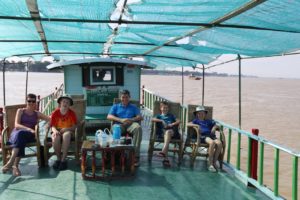
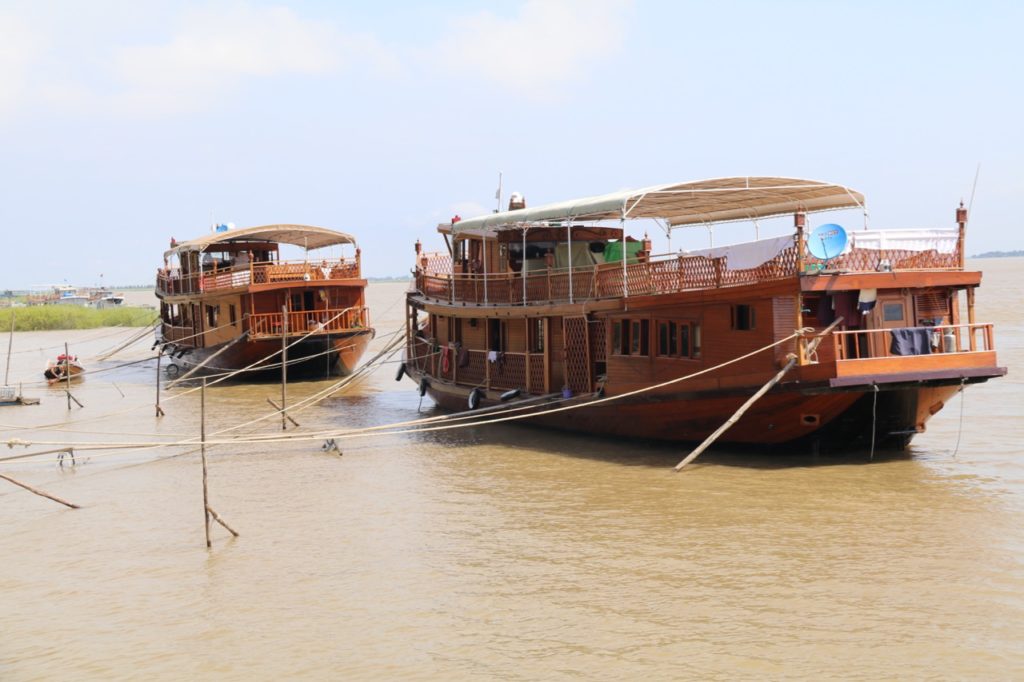
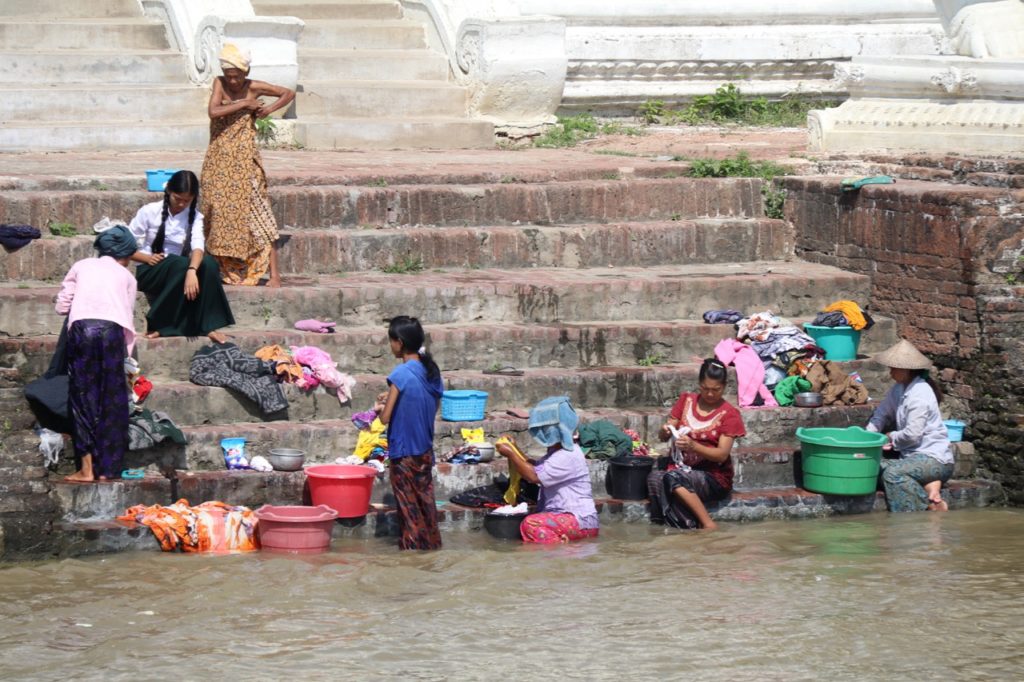
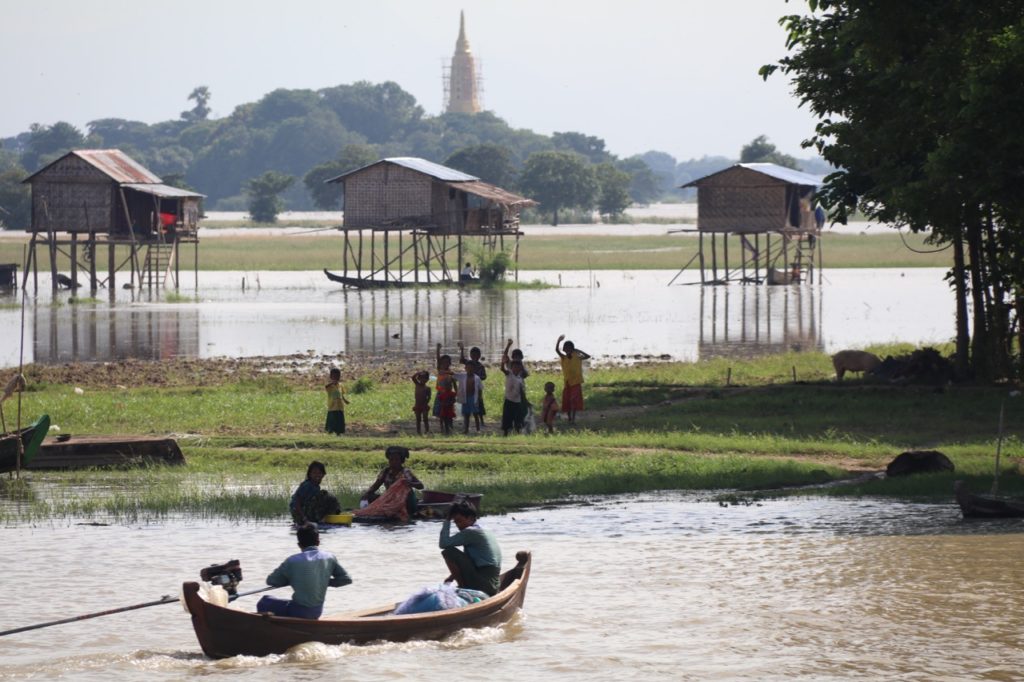
Sagaing
Another of the previous royal capital cities for Myanmar, albeit for a short period of time in the 14th century. Sagaing Hill is the main attraction, because it’s scattered with (yet more) temples. At the top it also offers amazing views across the Ayeryarwady and back to Mandalay on the opposite bank.
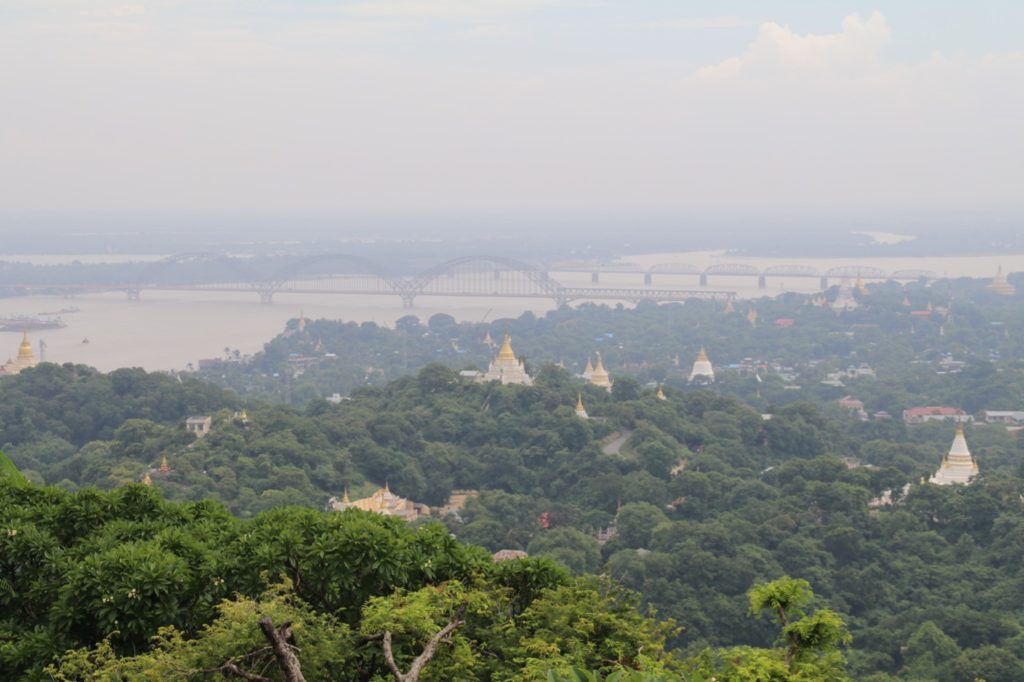
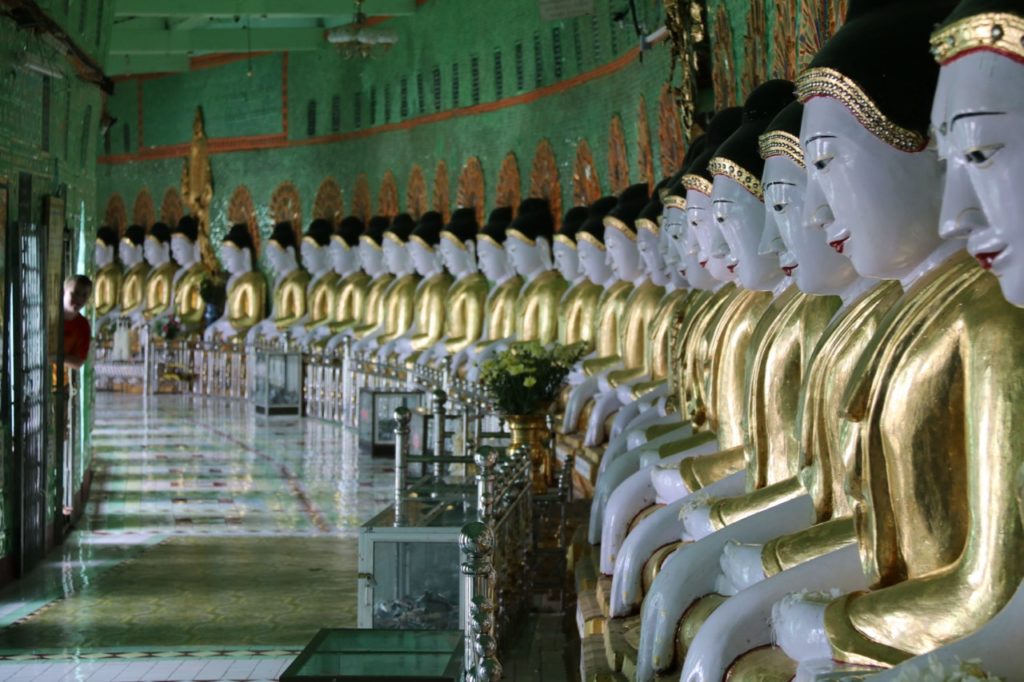
Inwa
The fourth location to hold prior royal capital status is Inwa, described in the guidebook as “enchantingly beautiful”. In fact it’s entirely rural, with dirt tracks, a few villagers, and a couple of small ruins from it’s heyday after becoming capital in 1364. We loved it – primarily because you get about on horse and cart….so with the boys sitting up front of our two carts taking turns to drive it produced much hilarity that mum and dad were consigned to bouncing around in the back of each cart while we trotted around some of the most rutted tracks in Asia. We also enjoyed seeing Bagaya Kyaung, a teak monastery from 1834 that had enormous teak supports 9ft in circumference and the crumbling but impressive Maha Aungmye Bonzan which demonstrated a refreshingly different style to the usual stupa spired temples of Myanmar.
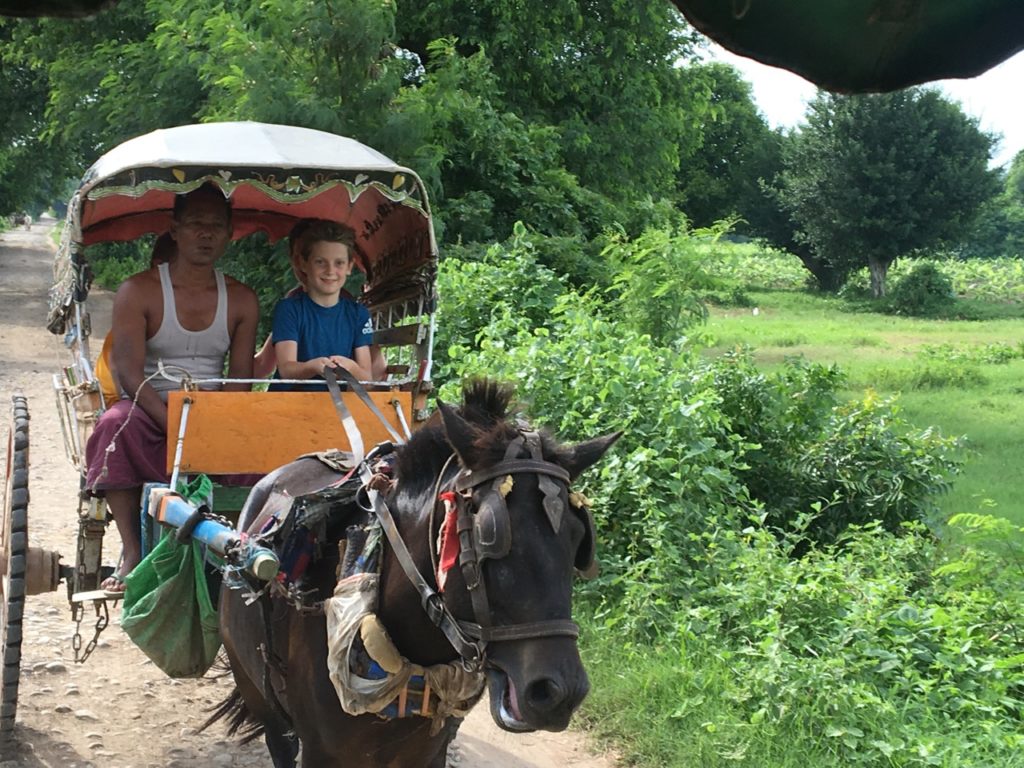
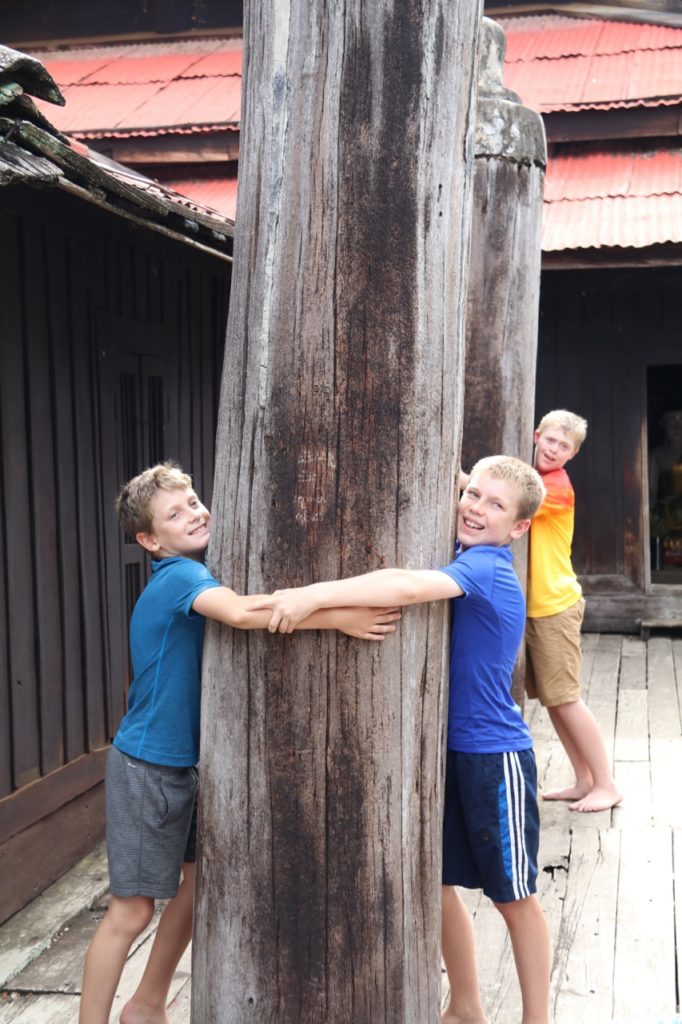
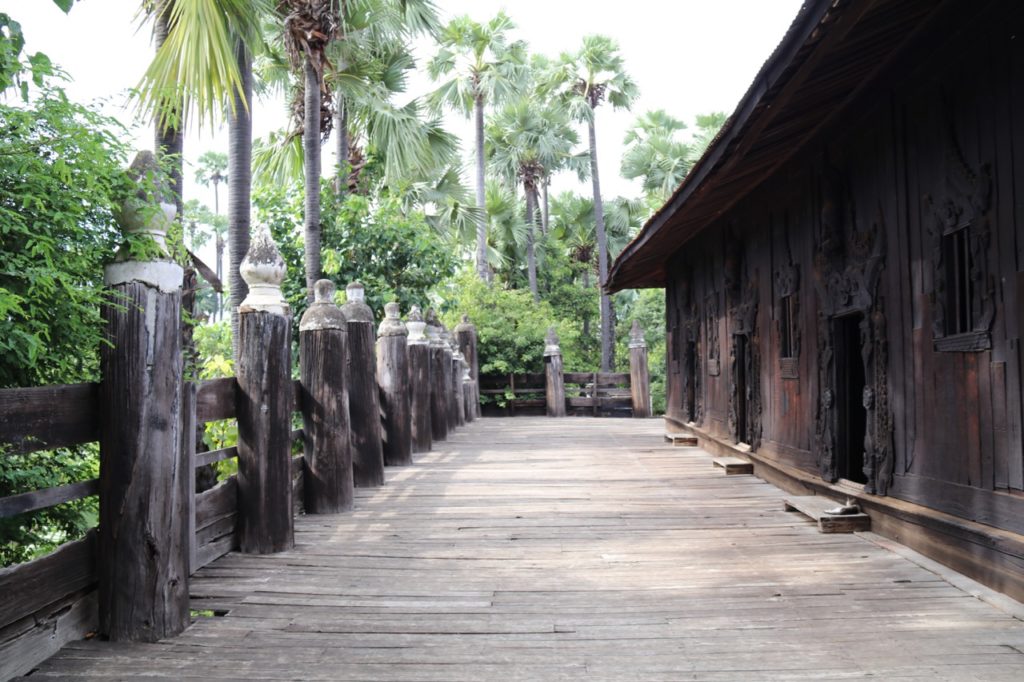
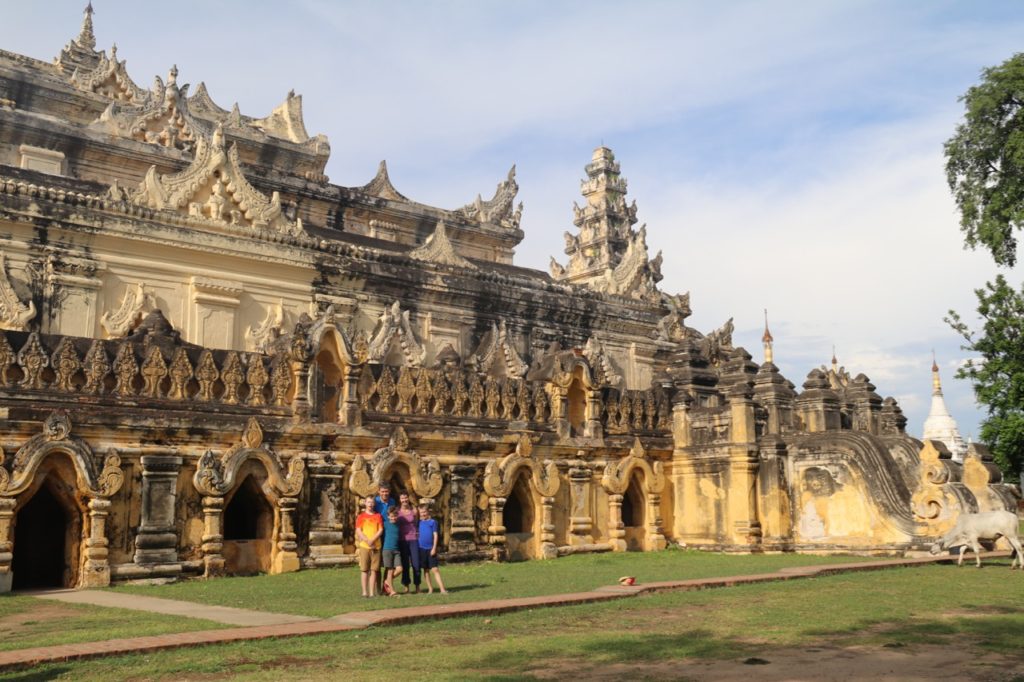
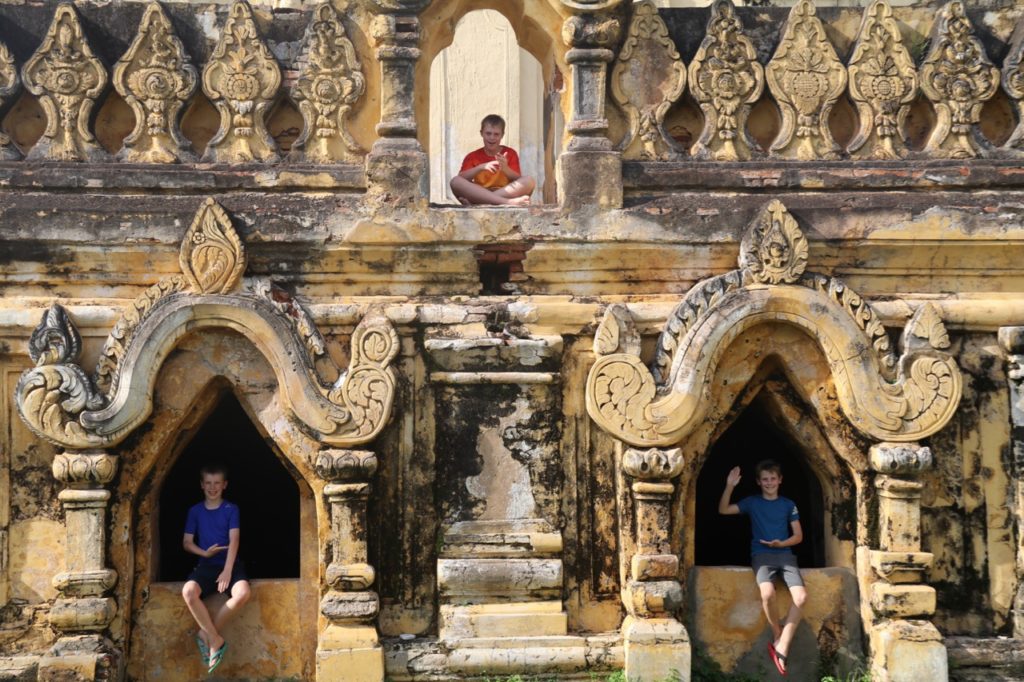
U Bein Bridge
A spectacular sight by any standards is the 1.2km long U Bein Bridge across Lake Taungthaman, making it the worlds longest teak footbridge. It has one thousand pillars and was built in 1859 – amazingly most of the pillars are original…which is a testament to the longevity of teak, noteworthy for those who have ever wept at the cost of teak garden furniture, like me.
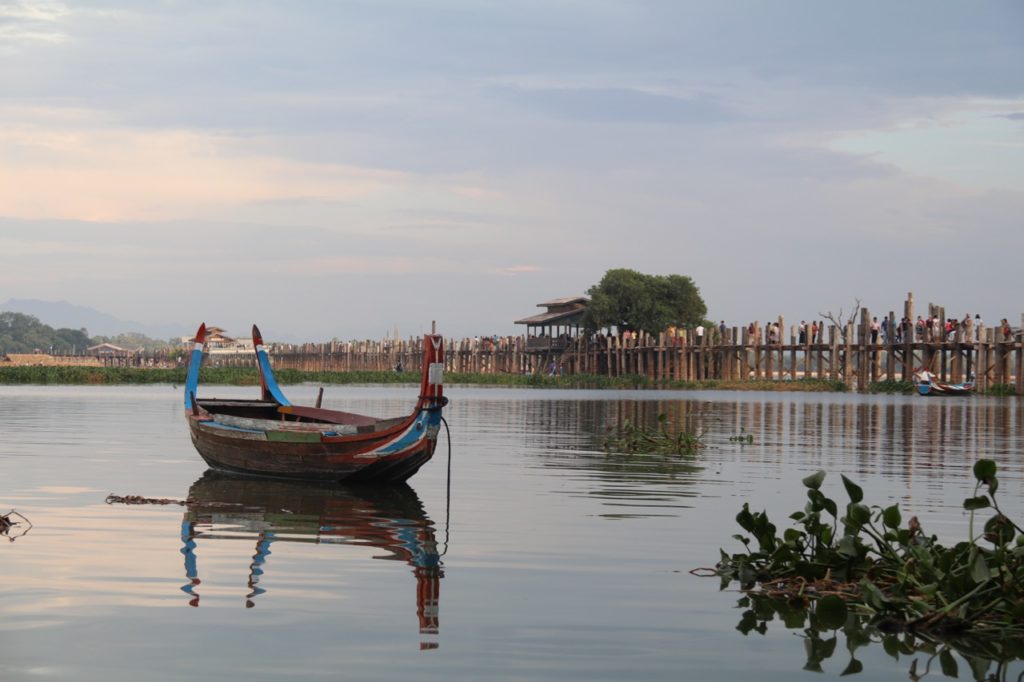
The Art of Giving
By the end of our time in Myanmar we have become fascinated with the culture of religious worship and giving. Daily life is generally concerned with observing the Buddhist religion’s Five Precepts (a sort of “5 Commandments”) and accumulating spiritual merit primarily through alms-giving, which in turn funds more Buddha statues, more temples, more shrines and so on. The basis for this spirit of giving is that it’s an investment to secure a favourable rebirth next time around. An obsessional approach to this philosophy by King Kyazwa (ruled 1235 to 1250) resulted in the building of so many temples at Bagan and donating so much of the country’s agricultural land to the Buddhist clergy that he effectively bankrupted the monarchy – at which point the Mongols came along and did what they did best in those days. In modern Myanmar it’s been a real education to see how much investment society makes into religious worship while at the same time being one of the poorest countries in the world (201 out of 228 in GDP ranking).
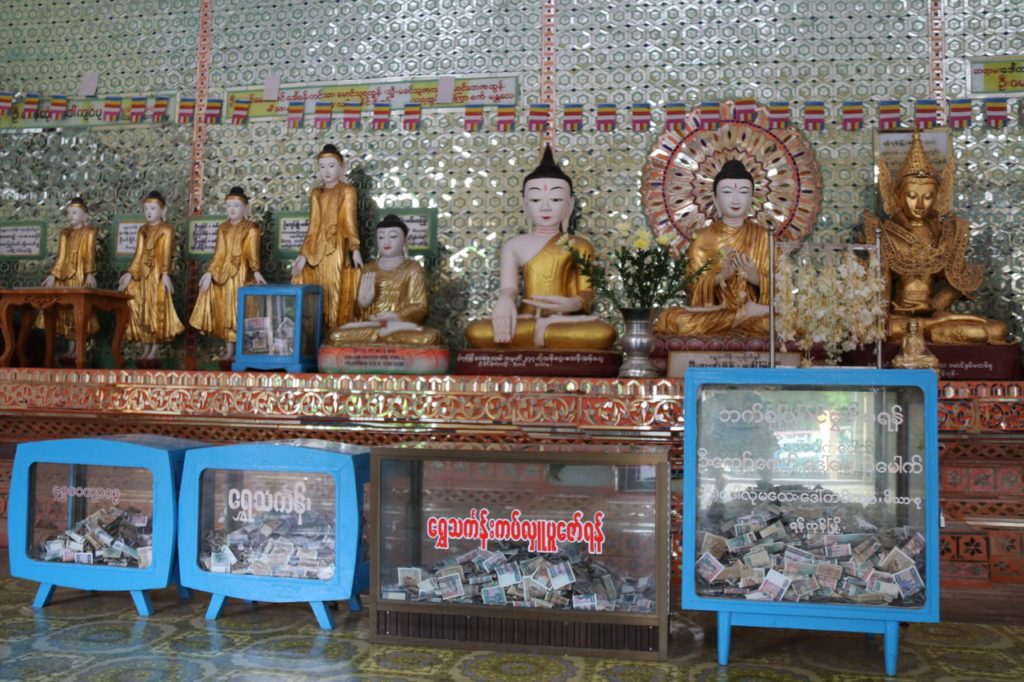
A Bit of Poetry – Mandalay by Rudyard Kipling, 1890
It’s been fun using this poem as bedtime reading for the boys and also as an english comprehension topic in one of our home made lessons. We’ve found it an evocative description of days gone by in Myanmar and so we thought it fitting to finish our last post from here with it. Enjoy!
By the old Moulmein Pagoda, lookin’ eastward to the sea,
There’s a Burma girl a-settin’, and I know she thinks o’ me;
For the wind is in the palm-trees, and the temple-bells they say:
“Come you back, you British soldier; come you back to Mandalay!”
Come you back to Mandalay,
Where the old Flotilla lay:
Can’t you ‘ear their paddles chunkin’ from Rangoon to Mandalay?
On the road to Mandalay,
Where the flyin’-fishes play,
An’ the dawn comes up like thunder outer China ‘crost the Bay!
‘Er petticoat was yaller an’ ‘er little cap was green,
An’ ‘er name was Supi-yaw-lat — jes’ the same as Theebaw’s Queen,
An’ I seed her first a-smokin’ of a whackin’ white cheroot,
An’ a-wastin’ Christian kisses on an ‘eathen idol’s foot:
Bloomin’ idol made o’mud —
Wot they called the Great Gawd Budd —
Plucky lot she cared for idols when I kissed ‘er where she stud!
On the road to Mandalay . . .
When the mist was on the rice-fields an’ the sun was droppin’ slow,
She’d git ‘er little banjo an’ she’d sing “Kulla-lo-lo!”
With ‘er arm upon my shoulder an’ ‘er cheek agin’ my cheek
We useter watch the steamers an’ the hathis pilin’ teak.
Elephints a-pilin’ teak
In the sludgy, squdgy creek,
Where the silence ‘ung that ‘eavy you was ‘arf afraid to speak!
On the road to Mandalay . . .
But that’s all shove be’ind me — long ago an’ fur away,
An’ there ain’t no ‘busses runnin’ from the Bank to Mandalay;
An’ I’m learnin’ ‘ere in London what the ten-year soldier tells:
“If you’ve ‘eard the East a-callin’, you won’t never ‘eed naught else.”
No! you won’t ‘eed nothin’ else
But them spicy garlic smells,
An’ the sunshine an’ the palm-trees an’ the tinkly temple-bells;
On the road to Mandalay . . .
I am sick o’ wastin’ leather on these gritty pavin’-stones,
An’ the blasted Henglish drizzle wakes the fever in my bones;
Tho’ I walks with fifty ‘ousemaids outer Chelsea to the Strand,
An’ they talks a lot o’ lovin’, but wot do they understand?
Beefy face an’ grubby ‘and —
Law! wot do they understand?
I’ve a neater, sweeter maiden in a cleaner, greener land!
On the road to Mandalay . . .
Ship me somewheres east of Suez, where the best is like the worst,
Where there aren’t no Ten Commandments an’ a man can raise a thirst;
For the temple-bells are callin’, an’ it’s there that I would be —
By the old Moulmein Pagoda, looking lazy at the sea;
On the road to Mandalay,
Where the old Flotilla lay,
With our sick beneath the awnings when we went to Mandalay!
On the road to Mandalay,
Where the flyin’-fishes play,
An’ the dawn comes up like thunder outer China ‘crost the Bay!


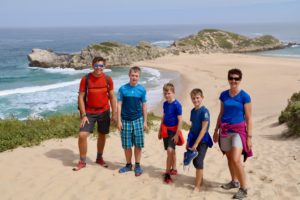
3 Comments.
What an amazing experience, a sense of the place is captured in this poem. You’ll have some scholars on your return!
How cool! I travelled overland as well, on OK Bus. We’ve seen a lot of the same things 🙂
Incredible trip and experiences! What a rich history and culture to explore. Who knew that’s where the largest bell is. Interesting to hear about the religious devotion. That’s for sharing on #citytripping You’ve certainly entranced me with Myanmar.